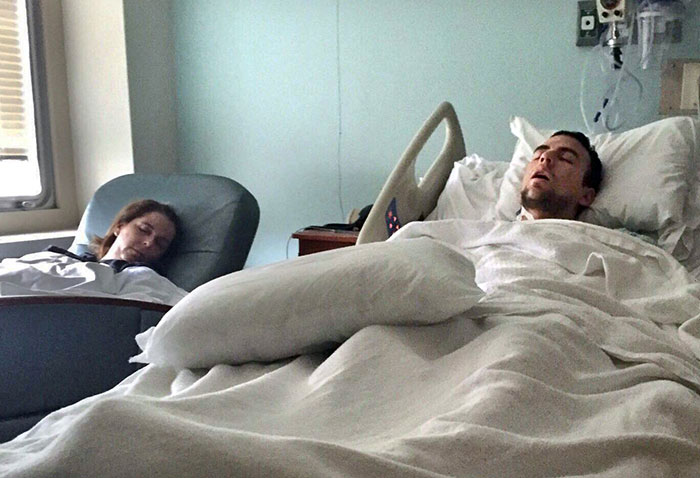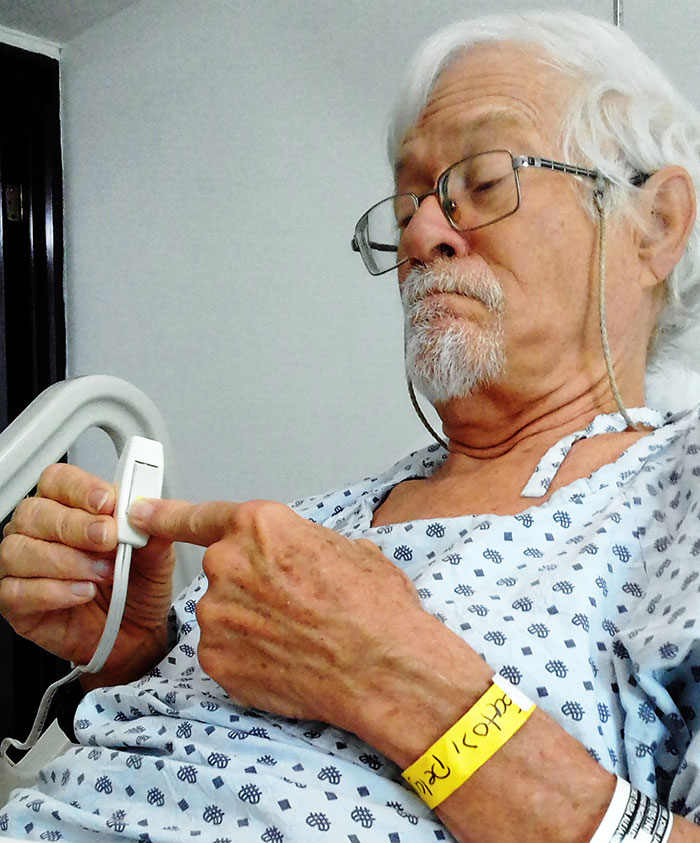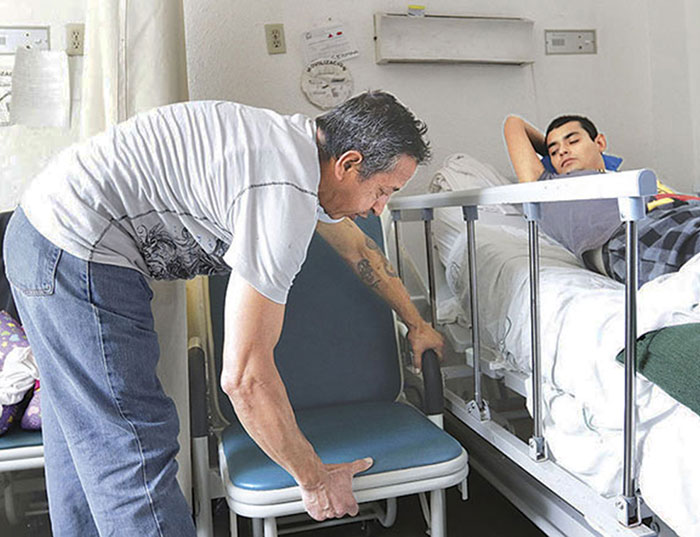The mystery of the
Mexican Cuidador investigated and explained
By John Pint
Over the years I have gone to visit Mexican friends and relatives in
the hospital and whenever I have done so, I have always found the
patient in the company of a family member.
“Naturally,” I was told. “In Mexico anyone who lands in the hospital
will always be accompanied day and night by a relative.”
“You mean the family member sleeps in the same room? Where?”
“A better quality private hospital will have a sofa in the room for
this purpose, but less fancy hospitals provide nothing and the familiar
may have to sleep on the floor.”
“Does the hospital provide food for the relative?”
“No, the familiar has to fend for herself, but many hospitals have
cafeterias.”

My first reaction to the Hospital Helper phenomenon was rather
negative. This, I figured, must be an extension of the “never leave a
guest alone” phenomenon I had discovered the very first day I visited
Mexico many years ago. I learned then that whenever I was in somebody’s
living room for no matter which reason or for whatever duration,
somebody would always be with me, doing their best to make small
talk—not so easy if neither of you speak the same language. At some
point, my “chaperone” would politely get up and leave, only
to be replaced instantly by another family member: and a new round of
small talk would begin.
So I supposed the Hospital Helper must be there for similar reasons.
“If I was a patient in a hospital,” I told myself, “I would want peace
and quiet, not hours of small talk.”
I’m from the USA and I remember arriving at hospitals there only to
discover that Visiting Hours were over and that nothing on earth could
persuade the receptionist to let me visit my loved one. But this I
accepted, figuring the presence of a visitor could only interfere with
the intense care provided by the doctors and nurses.
But suddenly it was me going to the hospital (for a double-hernia
operation) and there was my Mexican wife and her family planning who
was going to be staying with me day and night.
“No, no,” I cried. “I don’t want to importune anybody. Let’s just allow
the hospital to do its thing.”
“John, you don’t understand. This is not a quaint local custom. Mexican
hospitals expect and want a relative to be present 24 hours a day.”
Now that threw me for a loop. I had imagined the hospital staff wincing
at the logistical problems of all those non-patients roaming around the
building at all hours. Instead I was discovering that the Hospital
Helper phenomenon was standard procedure in Mexico and I had better get
with it.
So I did. My wife and some of her sisters would be at my side by day
and a nephew would watch over me at night.
I’m happy to say I was successfully operated upon and when I opened my
eyes, I was in a hospital bed with an IV needle in my arm. Late that
night I woke up feeling extremely thirsty and couldn’t see any drinking
water around me. “No hay problema,” I told myself, “I’ll just ring for
the nurse.”
Many hours earlier that same nurse had showed me a little on-off switch
only inches from my right arm. “Just press the switch to call me,” she
said.
Press the switch I did, again and again and again, but nothing happened
and no one came.

Aha! I thought, what if I was bleeding to death? Now at last, I said, I
have come to understand the reason for the Hospital Helper. “Hey Ivan!
¡Despierta! Wake up! Can you find me some drinking water?”
Actually, I was wrong because I was seeing the Helper merely as an
extra pair of hands. What a surprise I got when I fielded this subject
to my friends via Facebook! I was overwhelmed by the unanimity of their
responses.
“In the jargon we use in Mexican hospitals,” commented Dr. Margarita
Ibarra, a nephrologist, “these people are called Cuidadores
(Caregivers) and a visit to the Hospital Civil, for example, will
quickly provide you with hundreds of testimonies on the important role
these people play in getting their loved ones through a traumatic
experience. Numerous articles have been published in Psychology
journals about the heavy physical and emotional burdens borne by these
“unsung heroes,” especially if their dear ones are suffering from
chronic diseases.”
One of those people suffering from a chronic disease was Juan José
Amezola, who told me, “I could write a book about my case. They
diagnosed me with both cancer of the colon and appendicitis to boot,
and for all my examinations, appointments, studies and consultations,
my wife was there at my side, like a guardian angel. She took notes,
managed my schedule, everything, while I typically went about with my
head in the clouds. She was not only my Caregiver, she was also a
blessing to my hospital roommates and, in fact, to the whole floor,
because many of those people had come from far away and their
Cuidadores couldn’t stay 24 hours a day, but my wife was always helping
everyone, orienting them around the building, finding them food,
talking to both the patients and their family members, sharing photos,
recipes, anecdotes and especially... smiles.”
As for the origins of this practice of family members assisting their
sick relatives, Sandrita Cervantes points out that most Mexican
hospitals have a great many patients and far too few nurses to care for
them. “The other day, at the Social Security Hospital,” she says, “I
found one doctor and a dozen nurses trying to care for 150 patients
during their shift, and in these public hospitals a patient has to wait
three months to see a specialist!

So the role of the Caregivers is very important. What do they do? They
make sure the patients take their medicines and eat their food; they
help them change clothes and use the chamber pot; they clean the room,
etcetera, etcetera, and I’m talking about a very big etcetera! It’s an
exhausting job which brings you very close to your relative and makes
you reevaluate life, health and home. It makes you see the great
suffering that sickness brings upon humanity and shows you how
vulnerable we are. Life in a hospital is hard and sad, but to it your
Cuidador brings dedication, gentleness and love.”
And that, I discovered, makes all the difference. How is it the world’s
hospitals have become so much like auto repair shops? Well, ¡Viva
México! For bringing a forgotten element: love, back to hospitals and
health care.

Humanity's mental and physical suffering in Jorge Monroy's mural in
Guadalajara's Hospital Civil.

Chair-bed invented for use in Mexican hospitals.
|